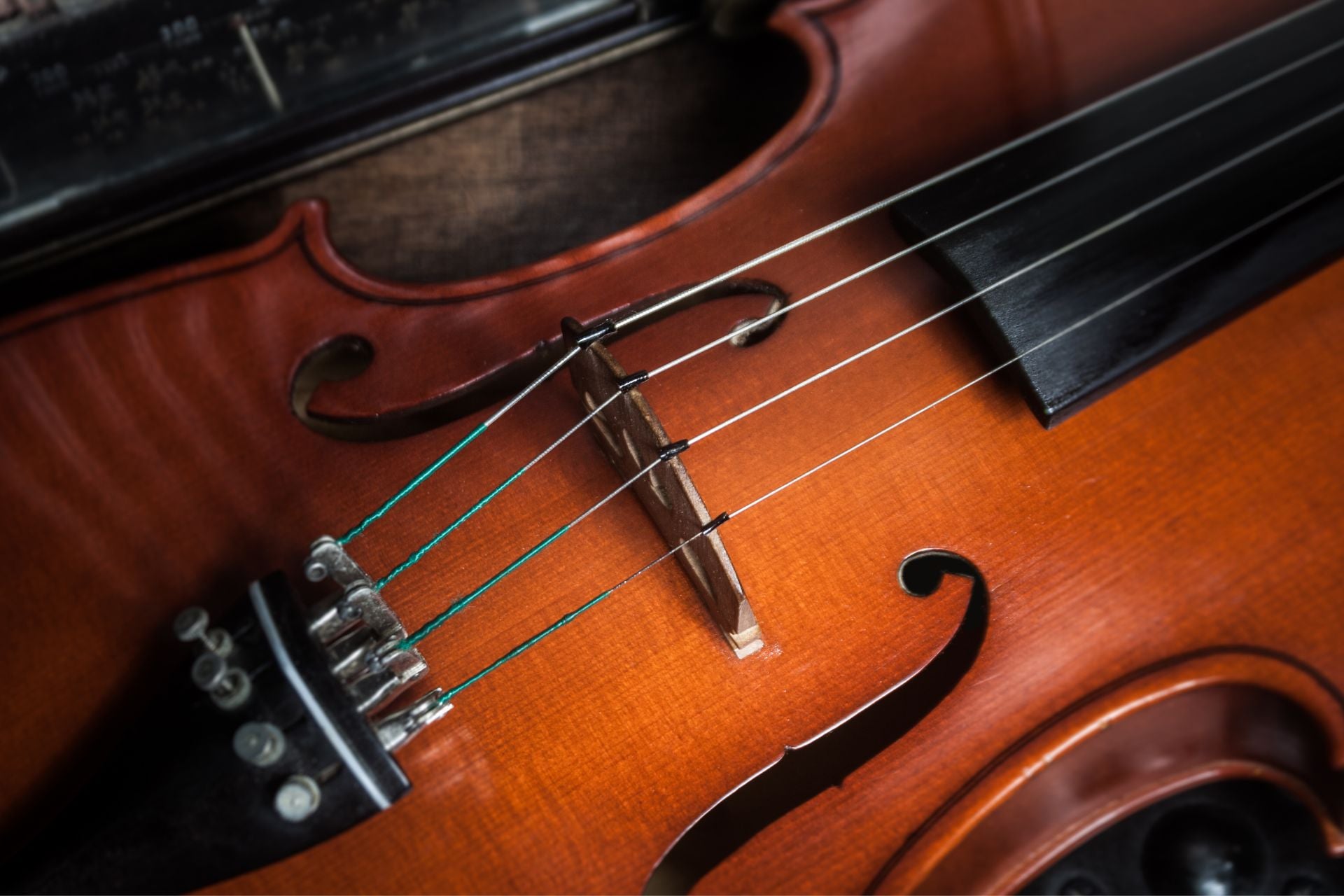General Articles
String Instruments: What They Are Made Of and How They Work
String instruments are some of the oldest and most fascinating musical instruments. They produce sound through vibrating strings that are stretched between two points. In this article, we will explore the components that make up a string instrument, their functions, and how they work.
Strings
The Heart of a String Instrument The strings of a string instrument are the most essential components. They are made from various materials, including gut, nylon, steel, and synthetic materials. They are attached to the body of the instrument at two points - the bridge and the tuning pegs. When the strings are plucked, they vibrate and produce sound waves that are amplified by the body of the instrument.
Body or Sound Box
Amplifying Sound The body or soundbox of a string instrument amplifies the sound produced by the vibrating strings. The size, shape, and construction of the body of the instrument affect the sound produced. Some instruments, like the guitar or violin, have a hollow body that amplifies the sound produced by the vibrating strings. Other instruments, like the electric guitar, have a solid body and rely on pickups and amplifiers to produce sound.
Bridge
Supporting Strings The bridge of a string instrument supports the strings on the body of the instrument. It is usually made of wood and is positioned between the strings and the soundboard. The bridge transfers the vibrations of the strings to the body of the instrument, which amplifies the sound.
Fingerboard or Fretboard
Playing in Tune The fingerboard or fretboard of a string instrument is a long, thin piece of wood that is attached to the neck of the instrument. It is usually made of a dense hardwood, such as ebony or rosewood. The fingerboard is divided into small sections or frets that are spaced out at specific intervals. These frets help the musician to find the correct pitch and to play in tune. The player presses down on the string behind a fret to change the pitch of the note produced by the string.
Tuning Pegs
Adjusting Tension The tuning pegs of a string instrument are used to adjust the tension of the strings and to tune the instrument. They are typically located at the top of the instrument's neck and are turned to adjust the pitch of the string. Tightening the tuning peg will increase the tension on the string and raise the pitch, while loosening the tuning peg will decrease the tension and lower the pitch.
Types of String Instruments
String instruments come in a variety of shapes and sizes, each with its unique sound and playing technique. Some of the most popular string instruments include the guitar, violin, cello, double bass, harp, and mandolin.
Guitar
Six Strings and Countless Possibilities The guitar is perhaps the most recognizable string instrument. It has six strings that are tuned to different pitches and is typically played by strumming or plucking the strings. The guitar's body is usually made of wood and has a sound hole or soundboard that amplifies the sound produced by the vibrating strings. The guitar's bridge supports the strings and transfers the vibrations to the soundboard. The guitar's neck is attached to the body and has a fingerboard with frets that help the player to find the correct pitch. The tuning pegs are located at the top of the neck and are used to tune the guitar's strings.
Violin
A Classic String Instrument The violin is another popular string instrument. It has four strings that are tuned to specific pitches and is played by bowing the strings with a wooden bow. The violin's body is made of wood and has a hollow, curved shape that amplifies the sound produced by the vibrating strings. The bridge of the violin supports the strings and transfers the vibrations to the soundboard. The violin's neck is attached to the body and has a fingerboard with small markings that help the player to find the correct pitch. The tuning pegs are located at the top of the neck and are used to tune the violin's strings.
Cello
A Larger String Instrument The cello is a larger string instrument that is similar to the violin but is played while seated and held between the legs. It has four strings that are tuned to specific pitches and is played by bowing the strings with a wooden bow. The cello's body is made of wood and has a large, curved shape that amplifies the sound produced by the vibrating strings. The bridge of the cello supports the strings and transfers the vibrations to the soundboard. The cello's neck is attached to the body and has a fingerboard with small markings that help the player to find the correct pitch. The tuning pegs are located at the top of the neck and are used to tune the cello's strings.
Double Bass
The Largest String Instrument The double bass is the largest string instrument and is often used in orchestras and jazz bands. It has four strings that are tuned to specific pitches and is played by either plucking or bowing the strings. The double bass's body is made of wood and has a large, curved shape that amplifies the sound produced by the vibrating strings. The bridge of the double bass supports the strings and transfers the vibrations to the soundboard. The double bass's neck is attached to the body and has a fingerboard with large markings that help the player to find the correct pitch. The tuning pegs are located at the top of the neck and are used to tune the double bass's strings.
Harp
A Unique String Instrument The harp is a unique string instrument that is played by plucking the strings with the fingers. It has a large, triangular-shaped frame that supports the strings and has pedals at the bottom that change the pitch of the strings. The harp's strings are made of nylon and are attached to the frame at two points - the soundboard and the tuning pegs. The soundboard amplifies the sound produced by the vibrating strings.
Mandolin
A Small String Instrument The mandolin is a small string instrument that is played by either plucking or strumming the strings. It has four to eight strings that are tuned to specific pitches and is typically used in folk and bluegrass music. The mandolin's body is usually made of wood and has a sound hole that amplifies the sound produced by the vibrating strings. The bridge of the mandolin supports the strings and transfers the vibrations to the soundboard. The mandolin's neck is attached to the body and has a fingerboard with frets that help the player to find the correct pitch. The tuning pegs are located at the top of the neck and are used to tune the mandolin's strings.
String instruments are fascinating musical instruments that produce sound through vibrating strings. They consist of several components, including strings, body or soundbox, bridge, fingerboard or fretboard, and tuning pegs. Each component plays an essential role in producing the sound and determining the unique sound of each instrument. String instruments come in a variety of shapes and sizes, each with its unique sound and playing technique. Whether you are a beginner or a professional musician, string instruments offer endless possibilities for creativity and musical expression.

